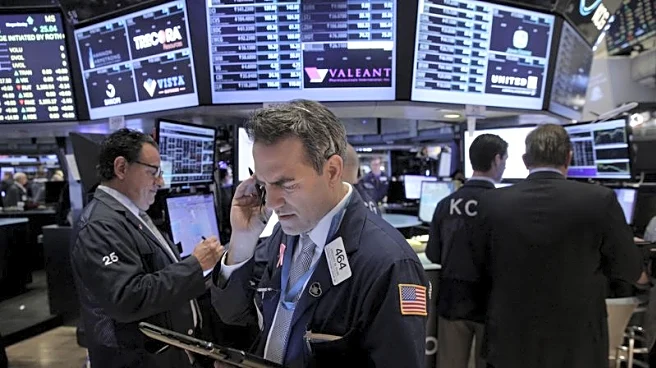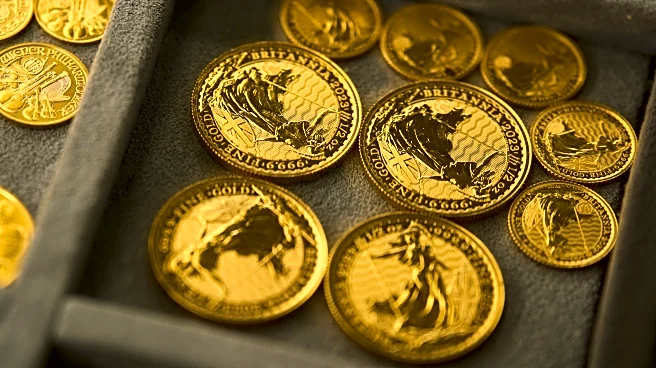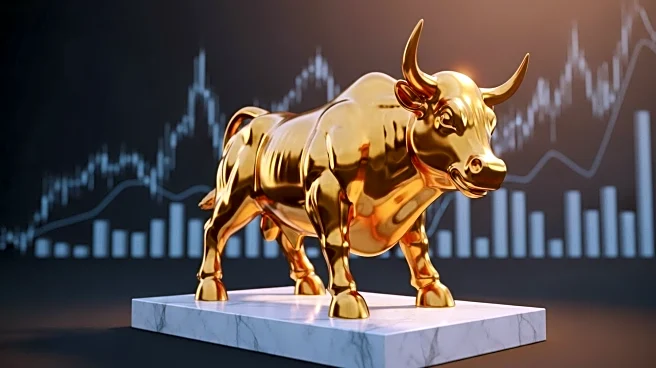What's Happening?
Gold prices have surged past the $4,000 mark for the first time, driven by geopolitical uncertainty and expectations of further U.S. interest rate cuts. Spot gold increased by 1.2% to $4,032.46 per ounce, while U.S. gold futures for December delivery rose by 1.3% to $4,054.80 per ounce. The rally is attributed to a combination of factors, including political and economic instability, central bank purchases, inflows into gold exchange-traded funds, and a weakening dollar. The U.S. government shutdown has further complicated the economic landscape, delaying key economic indicators and prompting investors to rely on secondary data. Analysts anticipate continued interest rate cuts, with a 25-basis-point reduction expected at the upcoming Federal Reserve meeting, followed by another cut in December.
Why It's Important?
The rise in gold prices reflects broader economic and political uncertainties, impacting various stakeholders. Investors view gold as a safe haven during turbulent times, and its price increase signals concerns over geopolitical tensions and economic instability. The ongoing U.S. government shutdown adds to the uncertainty, affecting economic data releases and influencing market expectations. The potential for further interest rate cuts could stimulate economic activity but also contribute to inflationary pressures. Central banks' continued gold purchases indicate a strategic shift towards reserve diversification, which could have long-term implications for global financial markets. The surge in gold prices may also affect industries reliant on precious metals, such as jewelry and electronics, potentially leading to higher consumer prices.
What's Next?
Analysts predict strong inflows into gold exchange-traded funds and continued central bank buying, supporting gold prices into 2026. Goldman Sachs and UBS have raised their price outlooks, anticipating further gains. The market is watching for potential geopolitical developments, such as a truce in the Middle East or Ukraine, which could impact gold's trajectory. Investors are also monitoring U.S. economic indicators and Federal Reserve actions, as these will influence future interest rate decisions. The next technical resistance levels for gold are projected between $4,050 and $4,100, with former resistance at $3,900 now serving as support. The broader economic context, including political turmoil in France and Japan, will continue to shape gold's appeal as a safe-haven asset.












